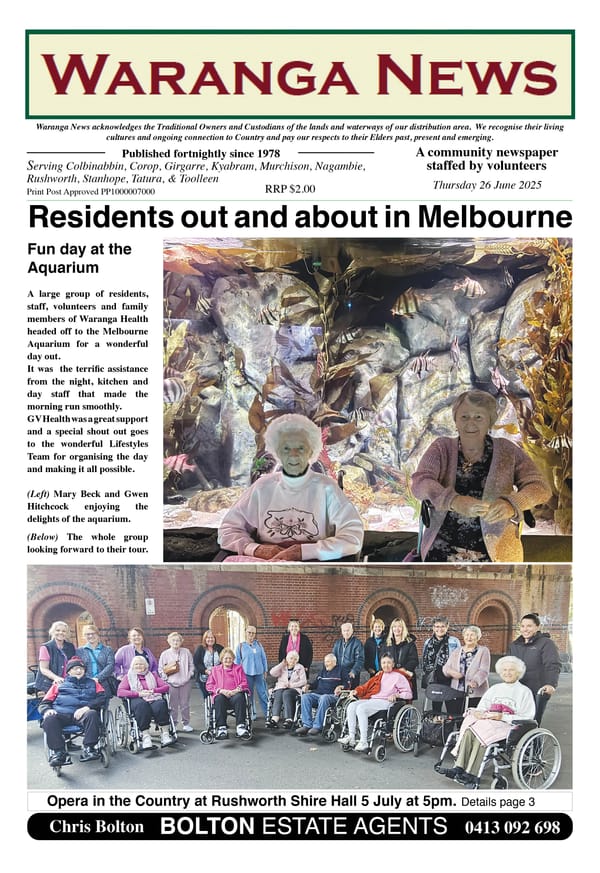5. Ancient history

Much of the history that has been written about the Aboriginal people of the local Waranga area relates to the last 180 years. This is understandable, in that academic historians are always concerned with written documentation and verification. However, that is all but impossible when a culture has relied on an oral tradition, as Aboriginal people had done before European colonisation.
Although we might think of it as a long time, the last 180 years represents a drop in the ocean (<1%) of time during which the local area has been in the custodianship of human beings. Without getting into a debate about exactly how long we are talking about, we can say with certainty that it is tens of thousands of years.
Of necessity, what follows requires some dreaming of what might have been in the millennia that preceded European colonisation of the area. It is not supposed to represent a documented history of the lives of the Aboriginal people who inhabited the Waranga area, or to do so in any chronological way. Instead, it will try to provide some understanding of what Aboriginal lives may have been like in the years before European colonisation.
CONNECTION TO COUNTRY
One of the most obvious themes in the history of Aboriginal people has been their connection to Country. Taking land selection in the late nineteenth century as a starting point, present day farming families in the area can point to perhaps 150 years of continuous connection to a parcel of land. Those people no doubt feel a very strong family affinity with that land. Imagine how strong that connection would be if your ancestors had been on that land up to three hundred times longer than that.
Central to the idea of connection to Country is the special significance that certain places within that Country have to long-term inhabitants and custodians. This could apply equally to Aboriginal people and more recent arrivals. From an Aboriginal point of view, these special places are linked by song lines. As defined in the first article in this series “They are the long Creation story lines that cross the country and put all geographical and sacred sites into place in Aboriginal culture.”
This begs the question – what were the sites that were important to the Ngurai-illum Wurrung and what were the stories about them that were handed down from generation to generation?
DREAMING SITES
These days we can really only speculate about where those special places were for the Ngurai-illum Wurrung people. They could include communal meeting places, areas where separate men’s and women’s business was carried out, places where historic events occurred e.g. a famous battle, the birth or death place of a significant individual, geographically significant features e.g. swamps, creeks and rivers, hills, water-holes, the Mt Camel range and much more.
Sadly, we seem to have very little in the way of information about significant sites in our area and the stories that are attached to them. This is probably unsurprising in view of the speed with which the culture virtually disappeared in the tiny window of time between 1840 and 1850. The Aboriginal population went into rapid decline, people were spread far and wide, and connection to Country was dramatically severed, particularly by the expansion of the pastoral industry and then the gold rush.



